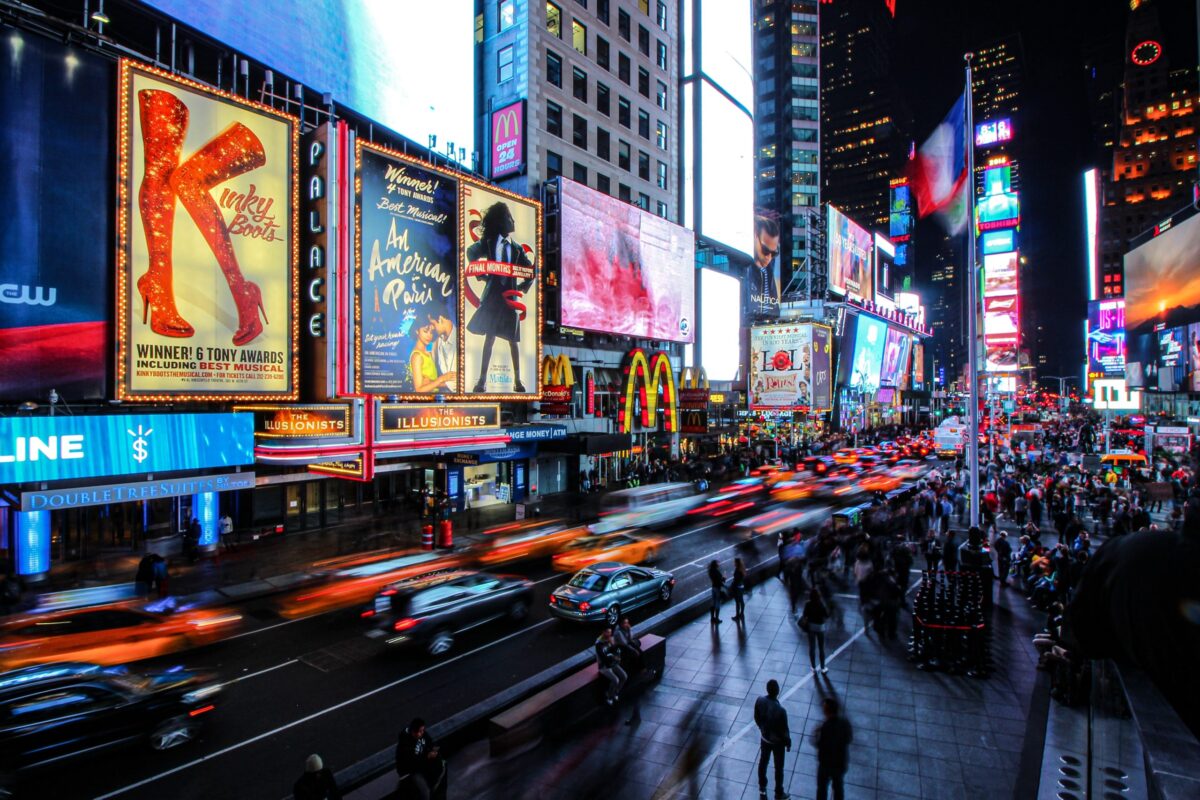
It was great to be in New York last week and meet so many in the C-Suite Network and other Advisors!
It’s hard to cover everything in such a short amount of time, so I want to write down some tips that you can all use in your personal branding efforts.
I’ve done a lot of work in my own personal branding as I mentioned up on the stage. It’s really been a learning experience figuring out what works, what doesn’t, and what really fits my personal brand. I am always evolving in that sense of what I will add, change, etc. Also, I am constantly balancing what to put under the company brand, what is under the Mari Anne Vanella brand, and what is part of both.
I mentioned LinkedIn a number of times, and that’s because that is a digital office workspace that YOU control. Think of years back, you would go into someone’s office and look around and get a feel for who they are, today that happens on calls many times….so that physical office that told you so much about prospects has moved online in many cases. Is your online office saying what you want people to know? Even other thought leaders that have pretty robust websites, blogs, etc. still have a healthy LinkedIn profile. That’s because LinkedIn has SEO value, it will be one of the first things (if not the first) that come up when people search for you… And they WILL search for you if they are considering working with you.
When I first started my company, the idea of personal branding was still pretty unheard of. But with the physical office space moving to the digital office space it’s opened a lot of opportunities for professionals to get their name out there. In 2000, working remotely and having a distributed team was an odd business model, but over the years I have closed millions of dollars of business with organizations I have not met in person. What they discover about The Vanella Group, Inc. and me personally helps them make those decisions.
I realize there are people that are reluctant to do a lot on LinkedIn, or they think it’s not important. I can say with a lot of confidence that if you invest the time in creating a solid profile on there it will get the message out that YOU want out there. If there is a lot of white space when prospects are looking for what you do, they mentally fill in the blanks with things they assume, i.e. you are not on top of modern trends, you are not knowledgeable of common digital practices, etc. Part of the training I do for teams include using LinkedIn to get up to speed quickly on who you are about to have a meeting with. It will accelerate your prospects feeling good about you when they can get to know you online.
If there is nothing to see online, they might think that you’re a late adopter and you haven’t gotten on the digital wagon of maintaining an online presence. If they are really pushing an online presence, you may get ruled-out without ever knowing it because they think it isn’t an area you work in. In today’s digital world, that’s not that great of a message to send out.
If you are online but don’t update your digital presence, what do people discover? Do you still have your last job on there as your current job, that also sends a weird message. If you are a consultant promoting a business and your last job is what they see when they look you up, your consulting business looks more like “unemployed.”
I also see LinkedIn as a place to show some generosity. I tend to find it strange to see people working at a company in a leadership role for a number of years, and no one took the time to write a solid endorsement for them….or visa versa. It puts out a message that could be construed as not having a lot of loyalty or influence. That may not always be the case, but when I see people that freely give praise to their team and their team and other colleagues taking time to share their positive experiences, it says something about them. I have never met anyone that has or has given a lot of recommendations to be a cold person. It is a great way to give back to people that helped you get where you are. Is there anyone you can do that for?
What are some things that you can do right now?
Think of what your brand is. Is it modern? Is it edgy? What is unique? What do you do that no one else does? What part of the solution you bring is special? Put it on paper so you can mentally organize it. Name it something even….productize your solution.
Do you have a unique process you bring? I mentioned on the stage that I know no one does what my company does, and I built out a strong methodology around it. I own the Telesales 2.0® mark. I designed it to be different.
The value of doing this is twofold because it’s a methodology that is unique to my company and differentiates our solution, and it’s also something that I created that adds to my personal brand.
What have YOU created that you can package into something unique that YOU own?
A challenge I see with services related companies is trying to be all things to all people and having a cloudy message. It’s a good exercise to distill those top areas that you are solving into a 1-3 areas and those other auxiliary types of things that you do save for live conversations. That may not always apply, but if you can narrow it to something very concise, it is worth considering.
Another important thing is to stay current and educate yourself. I mentioned on the stage how I keep Google alerts for myself, my company, but I also do that for topics and industry trends. I put the Internet to work for me so is delivering to me the content that I want to consume. I run across a lot of great content that I wouldn’t have discovered through the regular channels, so it’s a great way to identify sources as well. I can also see where others are using dated methods, are running into obstacles, and it helps me better define my deliverables.
Keeping your accomplishments current is also another important factor in how you brand yourself. I’ve seen people that put minor accomplishments from 20 years ago in their bio that could be weakening their brand. What you did in 1992 is likely not super relevant to what is happening in 2019. If you go too far back without a solid recent list of output, you run the risk of looking stale. I believe a lot of people that complain of ageism also put out aging messaging about themselves…not that it doesn’t exist, but why put something out there that causes more harm that good?
Something I see from time to time is a company with a pretty good website, but they don’t put their management team on it and we don’t really know who’s behind the curtain. Today’s buyers are astute, especially in executive-level services, and they want to know who you are and what you do. I would even recommend working with a content consultant or somebody that can help you to have a consistency across your website, your bio, your LinkedIn profile, Twitter, etc. Me personally, I spend zero time promoting anything professional on Facebook because my prospects just aren’t there, that goes with Instagram too.
I tend to avoid heated topics outside of my industry because it only would serve to alienate prospects. I do however engage in discussions about related topics that are flat out against what I know to be true. When I see people promoting the “cold calling is dead” message, I will gladly jump into that discussion. People do take calls, they don’t take bad calls…99% of the calls they get are bad calls. So that is another thing to think of, how will you engage in topics where there are differing opinions. Or will you step outside of your industry space and engage in other discussions too?
Another thing to consider is what you want to be discovered vs. what you don’t. I don’t want to impact my SEO results with things that are unrelated. I have an equestrian site that I don’t put my name on because I don’t want to have all this stuff come up that impacts my main business results. People that know me know I adore my animals, I share photos on Twitter, etc. But one thing I don’t want is to have my potential clients of The Vanella Group, Inc. searching for B2B telemarketing and finding dressage and costume demo content.
There’s much more I could comment on, it’s a big topic and one you have to periodically stop and assess what needs to be changed. Please connect with me on LinkedIn, Twitter, or feel free to email or call me.
Have an excellent week!















